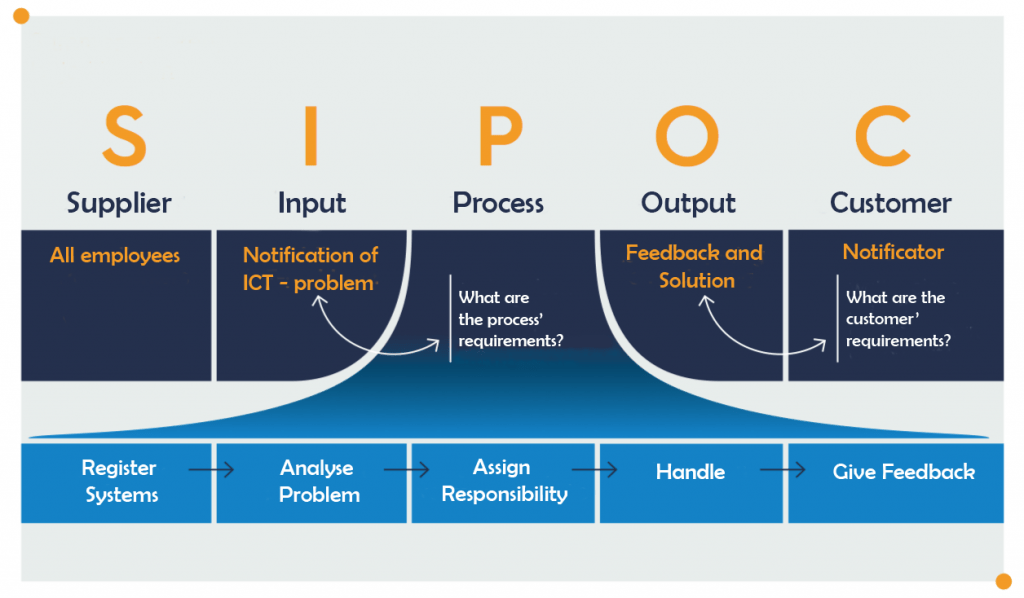How to apply SIPOC to your business?
There are many tools that can be used to manage business processes. One of those is called a SIPOC. This tool enables an insight about who is involved in which processes and what influence those have.
A SIPOC originally comes from the Total Quality Management (TQM) movement. The tool focuses on mapping the process that must be improved, which in its turns helps determining the scope.
SIPOC stands for:
- S: Supplier
- I: Input
- P: Process
- O: Output
- C: Customer
Elaborating these five core values create a vision about the process. Think of it as a chain, where the supplier is responsible of the input and the output is sent to the customer. But keep in mind the output must meet the customers’ requirements or even excel those.
To determine the scope of your business or project, utilising a SIPOC is really helpful. It offers a helping hand to decide which steps in the process should be improved. Furthermore, it contributes to give insight in whom the process may concern.
How do you use a SIPOC?
When talking to customers, it is important to create a space where they are able to speak freely about improvements that can be seen as necessities. Using a SIPOC can be done by following the next steps:
- Draw the SIPOC structure on a flip-over and bring post-its when talking to the customer.
- How to determine what the input must be? The supplier is responsible for the input. This may concern a complaint for example.
- Therefore, the first step in SIPOC is registering the input.
- What is the output and who is on the receiving end?
- The customer is and the requirements they want you to meet might be about quality for example. Make sure these are met.
- When this has been established, you are able to determine which requirements there are concerning the input. Because remember: garbage in = garbage out.

Finished your SIPOC? To make sure your scope is not too broad, keep seven steps in mind. When actually working out all parts of the SIPOC, more steps will be added. If, in this phase of the SIPOC, your plan already contains more than seven steps, some should be eliminated. This leads to deciding about a part of the process instead of the whole.
Advantages of using SIPOC as a tool
- It creates an understanding between you and the customer. By working out the requirements together, a collective insight of the project arises.
- Making sure the foundation is strong, might help you in later phases of the project. This prevents uncertainty, which is one of the most impeding factors possible.
- It gives you insight in your suppliers and customers, which enables you to win time on your project and helps you save energy.
- Last, but certainly not least: it is fun! You will learn to quickly and correctly define the core of the problem and the essence of the project.
However, creating a perfect SIPOC should not be your main aim, it is just a tool to determine your scope!






